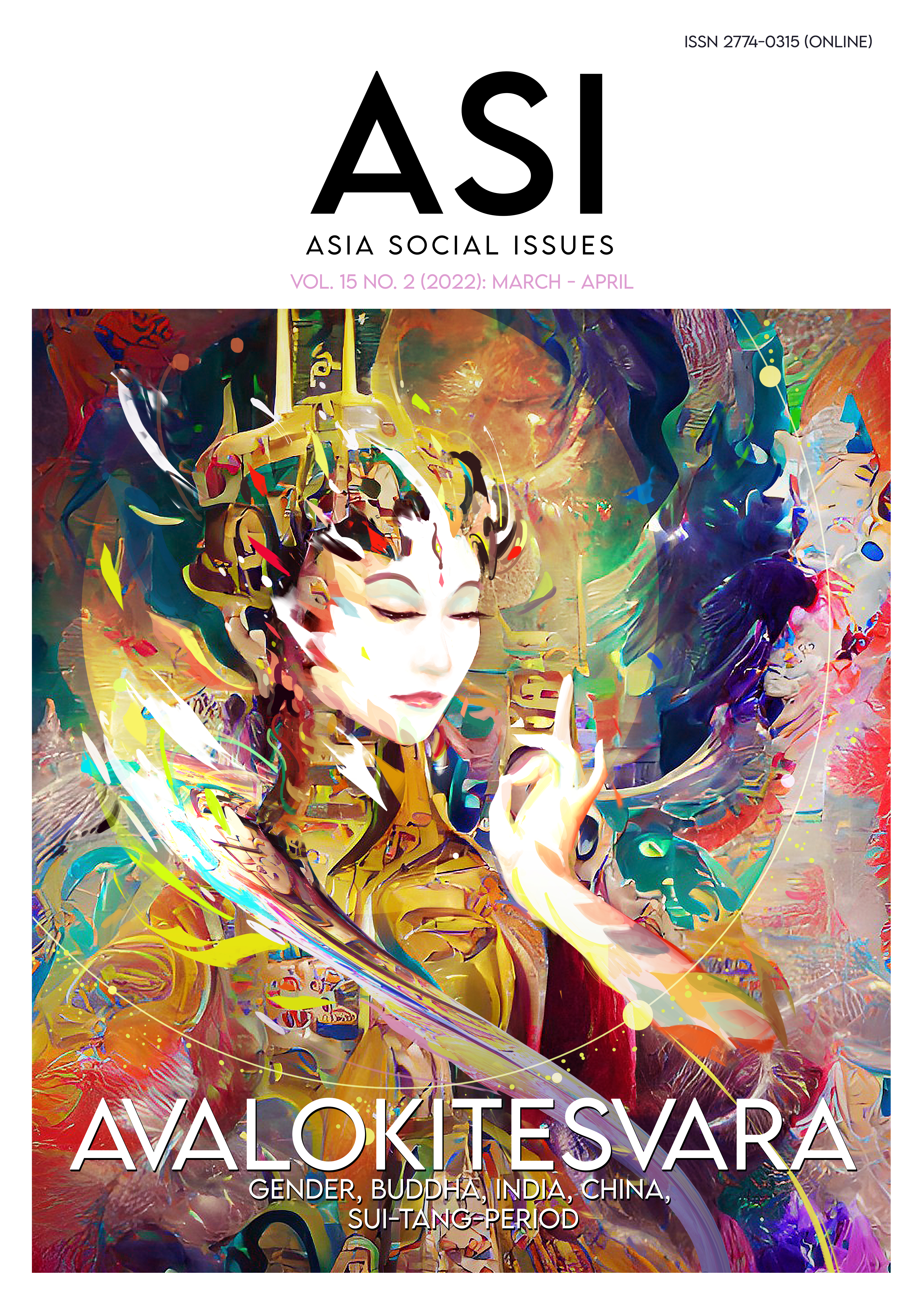From Medicalizing State to Sacralizing Status of Thai Buddhist Monks in Secular Space: A Case Study of the Priest Hospital
Main Article Content
Abstract
This paper examines the sacred status of Thai Buddhist monks who have been engaging with the modern secular healthcare system, which also contrasts with their monastic traditions. It questions how modern medication has affected the sacred figure of Thai monks and what is their reaction to maintain their sacred status in such a secular space? Participant observations and informal interviews have been conducted, and data are conceptualized through the ideas of the birth of the clinic and biopower proposed by Michel Foucault. It finds that the traditional healing previously played by Thai monks has been challenged by modern medication eventually the monks also access the modern hospital. This phenomenon helps to change the idea of the cause of sickness, from demons to germs. This is interesting when some Buddhists request the monastic code-based healthcare system and monk patients’ zone. This paper argues that such an effort aims to maintain the sacred status of monks, who are perceived as holy persons and should not be seen by laypeople especially when they are in sickness, pain, and sorrow, which portray their ordinary human natures. Therefore, zoning management in the government hospital is needed to sacralize the monks’ status.
Article Details
Copyright: CC BY-NC-ND 4.0
References
Alzate, E. B. (2017). Religious liberty in a Lockean society. NY: Palgrave.
Amer, A. (2006). Reflections on bloom’s revised taxonomy. Electronic Journal of Research in Educational Psychology, 4(8), 213-230.
Artsanthia, J., & Techakuljareon, P. (2019). Buddhist monk illness and nursing care according to Dharma discipline (Tripitaka). Journal of The Royal Thai Army Nurses, 20(3), 27-33.
Bunthong, A. (2017). The behavior in taking care of health possessed by monks in Thachana district, Suratthani province. Journal of Social and Cultural, 1(2), 7-13.
Dhammajito, V. (2017). Taking care of patient monks in the hospital. Bangkok, Thailand: Priest Hospital.
Foucault, M. (1973). The birth of the clinic: An archeology of medical perception. New York: Random House.
Foucault, M. (1980). The eye of power (pp. 63-77). In Gordon, C. (Ed.). In power/knowledge: Selected interviews and other writings, 1972-1977. New York: Pantheon Books.
Foucault, M. (2004). The crisis of medicine or the crisis or antimedicine? Foucault Studies 1(1): 5-19.
Fournier, A. L. (2017). Creating a sacred space in the intensive care unit at the end of life. Dimensions of Critical Care Nursing, 36(2), 110-115.
Heng, T. (2016). Making “unofficial” sacred space: Spirit mediums and house temples in Singapore. Geographical Review, 106(2), 215-234.
Kacharat, S. (2016). The construction of medicalizing state: A case study of Thai health promotion foundation’s well-being advertisements (Doctoral dissertations). Bangkok, Thailand: Integrated Science, Thammasat University.
Marbaniang, D. (2011). Secularism in India: A Historical analysis. Online Self-Publishing Book, North Carolina, United States of America: Lulu Press.
Marknuan, P. (2014). Magic and ritual of folk healers: Analysis and folkloristic approaches. Manutsayasat Wichakan: Humanities Journal, 21(1), 90-123.
Muksong, C. (2020). From demon to germs: Medical history and plague in Thailand. Bangkok, Thailand: Matichonbook.
Onto, P., Rudtanasudjatum, K., Tanvatanakul, V., & Sangjun, S. (2019). Web application “SUKPRA” for the monk selfcare in 4.0 society. MCU Journal of Peace Studies, 7(1), 96-110.
Payutto, P. (2014). Buddhist medicine. Nakhonpathom, Thailand: Wat Nyanavessakavan.
Pornprasert, P. (2016). Quality of life of the Thai Buddhist monks with chronic illnesses at Chaloemphrakiat 60 Phansa Nawamintarachini Hospital Ubon Ratchatani province. Journal of Humanities and Social Sciences, URU, 7(2), 89-100.
Priest Hostpital. (2019). Annual report of Priest hostpital. Retrieved from https://www.priest-hospital.go.th/report/reportYear
Puaksom, D. (2007). Of germs, public hygiene, and the healthy body: The making of the medicalizing state in Thailand. Journal of Asian Studies, 66(2), 311-344.
Puriwanchana, S. (2018). Buddhism and the culture of Thai local medicine. Journal of Buddhist Studies Chulalongkorn University, 24(3), 79-90.
Saengkanokkul, P. (2016). Medicalized state. Retrieved from https://prachatai.com/journal/2016/06/66530
Schedneck, B. (2012). Constructing religious modernities: Hybridity, reinterpretation, and adaption in Thailand’s international meditation centers (Doctoral dissertations). United States of America: Arizona State University.
Supsin, J. (2018). Modham: A cultural assimilation based on faith, tradition, and culture. Journal of Humanities and Social Sciences Surin Rajabhat University, 20(2), 301-314.
Taylor, J. L. (1993). Forest monks and the nation-state: An anthropological and historical study in Northeastern Thailand. Singapore: Institute of Southeast Asian Studies.
Tepsuriwong, S. (2019). Wisdom of Thai traditional medicine from Thai traditional healers in Sathingphra Penisula, Songkhla province. Journal of Community and Livelihood Development, 8(1), 238-249.
Tse, J. (2014) Grounded theologies: ‘Religion’ and the ‘secular’ in human geography. Progress in Human Geography, 38(2), 201-220.
Winichakul, T. (2015). Buddhist apologetics and a genealogy of comparative religion in Siam. Numen, 62(1), 76-99.
Yemdate, N. (2015). From king Ashoka, the great paragon of virtue, to king Jayavarman VII’s dedication: Interpretations of the inscriptions found on the Arogyasala. Damrong Journal of the Faculty of Archaeology Silpakorn University, 14(1), 169-204.


